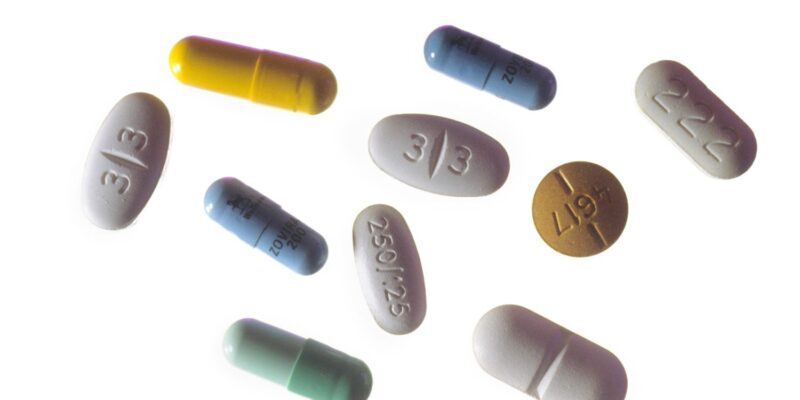Cephalosporins are a class of beta-lactam antibiotics that are derived from the fungal species Acremonium. Similar to penicillin, cephalosporins contain a beta-lactam ring structure in their molecular structure that allows them to interrupt bacterial cell wall synthesis. However, they are more resistant than penicillin to degradation by beta-lactamases produced by some bacteria.
Cephalosporins are classified based on their generation. The first-generation cephalosporins were similar in spectrum to penicillins but were less susceptible to penicillinase-mediated degradation. Examples include cephalexin and cefazolin. Second-generation cephalosporins had extended spectra that included additional gram-positive and gram-negative organisms. Cefuroxime and cefaclor are examples of second-generation cephalosporins. Third-generation cephalosporins such as cefixime, cefpodoxime, and ceftriaxone have even broader spectrums that provide activity against gram-negative bacilli including Pseudomonas. Fourth-generation cephalosporins like cefepime have very broad anti-bacterial activity including Pseudomonas aeruginosa and extended spectrum beta-lactamase producing organisms.
Mechanism of Action
The mechanism of action of Cephalosporin Drugs is very similar to that of penicillin. Cephalosporins inhibit the biosynthesis of the peptidoglycan layer of the bacterial cell wall by binding to one or more penicillin-binding proteins (PBPs). The PBPs are enzymes involved in the final cross-linking step of peptidoglycan synthesis. By blocking this step, cephalosporins disrupt the integrity of the bacterial cell wall, leading to osmotic lysis and cell death. Isoenzymes of PBPs confer different specificities to various classes of cephalosporins.
Pharmacokinetics
The pharmacokinetic properties of cephalosporins can vary significantly between different generations and chemical classes. In general, cephalosporins are absorbed quickly after oral administration with bioavailabilities ranging from 30-90%. They are widely distributed throughout the body and penetrate well into various tissues including lung, kidney, liver, bones and other organs.
Most cephalosporins are excreted renally with varying degrees. While first-generation agents are primarily excreted unchanged in urine, later generations tend to undergo some hepatic metabolism prior to renal excretion. The plasma half-lives also differ, from 30 minutes for first-generation cephalexin to 2-4 hours for later generations. These attributes determine dosing frequencies and advantages in certain infections. For example, extended interval dosing of ceftriaxone provides convenient once-daily dosing.
Spectrum of Activity
Similar to penicillin, first-generation cephalosporins are primarily active against gram-positive bacteria like Staphylococcus aureus and Streptococcus pneumoniae. Some have useful activity against certain gram-negative bacilli such as E. coli, Proteus, and Klebsiella as well. Second-generation agents have enhanced activity against gram-negative organisms including E. coli, K. pneumoniae, H. influenzae and Moraxella catarrhalis.
Later generations have even broader spectrums. Third-generation drugs are highly effective against gram-negative bacilli and some have activity against anaerobes. They are commonly used for respiratory tract, skin and soft tissue infections caused by E. coli, K. pneumoniae, Enterobacter, Serratia, indole-positive Proteus, Citrobacter and anaerobes. Fourth-generation cephalosporins like cefepime provide reliable coverage of Pseudomonas in addition to the above pathogens.
Clinical Uses
Based on their antimicrobial spectra, cephalosporins are widely used for pneumonia, bronchitis, skin and soft tissue infections, bone and joint infections, intra-abdominal infections and UTIs. Selection depends on the likely causative bacteria, their resistance patterns and other patient factors. For community-acquired infections, first- and second-generation agents are usually sufficient. More broad-spectrum third- and fourth-generation drugs are reserved for nosocomial infections that may involve drug-resistant organisms.
Cephalosporins have advantages over other antibiotic classes in patients allergic to penicillin due to low cross-reactivity. They are also generally better tolerated than aminoglycosides. The intravenous formulations provide parenteral treatment options for hospitalized patients. Furthermore, extended interval dosing with ceftriaxone provides compliance benefits for chronic suppressive or outpatient therapy.
Emergence of Resistance
Unfortunately, drug-resistant strains have emerged since the widespread clinical use of cephalosporins from the 1960s onwards. Resistance development in some organisms is partly attributed to the overuse or incorrect use of these drugs. Notable resistance mechanisms include production of beta-lactamases which hydrolyze the beta-lactam ring, target modifications limiting drug binding to PBPs and reduced outer membrane permeability.
Extended spectrum beta-lactamases (ESBLs) capable of hydrolyzing many cephalosporins have become a major problem worldwide. Additionally, drug-resistant gram-negative rods like Pseudomonas, Acinetobacter and Stenotroph
Get More Insights On Cephalosporin Drugs
Get this Report in Japanese Language
Get this Reports in Korean Language
About Author:
Priya Pandey is a dynamic and passionate editor with over three years of expertise in content editing and proofreading. Holding a bachelor’s degree in biotechnology, Priya has a knack for making the content engaging. Her diverse portfolio includes editing documents across different industries, including food and beverages, information and technology, healthcare, chemical and materials, etc. Priya’s meticulous attention to detail and commitment to excellence make her an invaluable asset in the world of content creation and refinement.
(LinkedIn- https://www.linkedin.com/in/priya-pandey-8417a8173/)
